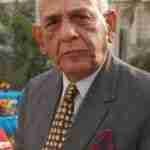Memories of the Battle of Rezangla were revived whilst commencing the current disengagement at the Pangong Tso. The stories of the ferocity of this battle between the troops of 13 Kumaon Regiment and the invading troops of the Peoples Liberation Army(PLA) of PRC had wafted to us whilst we were in the last legs of the flying training at the Air Force Flying College in December 1962. We were packing our bags to go to the Navigation School at Begumpet, Secunderabad
The real impact of the circumstances within which the event would have unfolded truly permeated my subconscious when I flew over the actual battle scene in a Dakota (DC-3) aircraft of No 43 Squadron of the Air Force, a whole year after the event. In absence of documentation, it is difficult to fix the exact date but it was in November 1963 that I am certain of. We, all four, newly commissioned Pilot Officers were herded in one aircraft for a familiarization sortie in southern
Memories of the battle of Rezangla were revived whilst commencing the current disengagement at the Pangong Tso.
Ladakh and we were to overfly Nyoma, Fukche, Chushul and the legendary and picturesque Pangong Tso. The supercharger equipped DC-3 had got airborne from Srinagar at the crack of dawn with the CO at the helms and touched down at Leh ( approx 11000 feet) to pick up late Col Randhawa MVC of the Daulat Beg Oldie (DBO) fame and the CO of the battle hardened Ladakh Scouts. Awestruck by his presence among us, sucking oxygen from portable bottles we discovered that he was to be our tour guide in the wild and, hostile territory. His easy camaraderie with our CO, Katta Dhillon (Later Air Cmde HS Dhillon AVSM, VM) had overwhelmed us.

The battle unfolds
The taste of the wild and vast expanse of the snowbound landscape had hit us as we got airborne again for the actual mission subsequently. From Leh, we had come down the Indus river in a South Easterly direction whilst maintaining heights of about 16000 feet for abundant safety. That was to remain above ground between 1000 feet to 4000 feet in that sector to be able to return to Leh in the event of an engine failure. Neither were these territories declared fully friendly and nor were the landing grounds at Nyoma and Chushul considered safe and hospitable those days.
At the sharp river bend on Indus about 35 kms South East of Chushul we had to undertake a labouring, spiralling climb to about 19000 feet to clear a range and then rapidly descended to 500 feet above the ground, aligning ourselves along the road to Chushul. To get a feel of the intimidating ambience of the scene, the passenger cabin heaters were switched off in a non-pressurized cabin; the DC-3 is not pressurized and it was -40 degrees Celsius outside. Our CO wanted it that way. It was then Col Randhawa had shown us the chokepoint of the Rezang La in the hills and we had circled twice to pay our tributes to Late Major Shaitan Singh PVC and his valiant men.

Shrine of the brave
Eight years later, in the same month, one more opportunity came my way to visit this shrine of the brave whilst returning in a Canberra PR 7 aircraft of No 106 Strategic Reconnaissance Squadron from an operational mission in the twilight period of the 1971 war. The pilot, my Flight Commander, Channi ( Late Gp Capt Charanjit Singh VrC VSM) readily acquiesced to my request and made a low pass at about 100 feet and at 800 kph over the totally snowbound valley of Rezang La. The resounding reverberations would have echoed across the subcontinent instilling a sense of awe, I hope, in our neighbours about our resolve to defend our realm.
Maj. Gen. Ian Cardozo, himself a Vir Chakra recipient, writes in his “Param Vir Chakra, Our heroes in Battle”, that “When Rezang La was later revisited dead Jawans were found in the trenches still holding on to their weapons…every single man of this company was found dead in his trench with several bullet or splinter wounds. The 2-inch mortar man died with a bomb still in his hand. The medical orderly had a syringe and bandage in his hands when the Chinese bullet hit him… Of the thousand mortar bombs with the defenders all but seven had been fired and the rest were ready to be fired when the (mortar) section was overrun”.
Other heroes defending Rezang La who were awarded Vir Chakras were Naik Hukum Chand (posthumous), Naik Gulab Singh Yadav, Lance Naik Ram Singh (posthumous), Subedar Ram Kumar and Subedar Ram Chander. All hailed from the Rewari district of Haryana where in Gudiani village stands a memorial for these brave sons of India.


